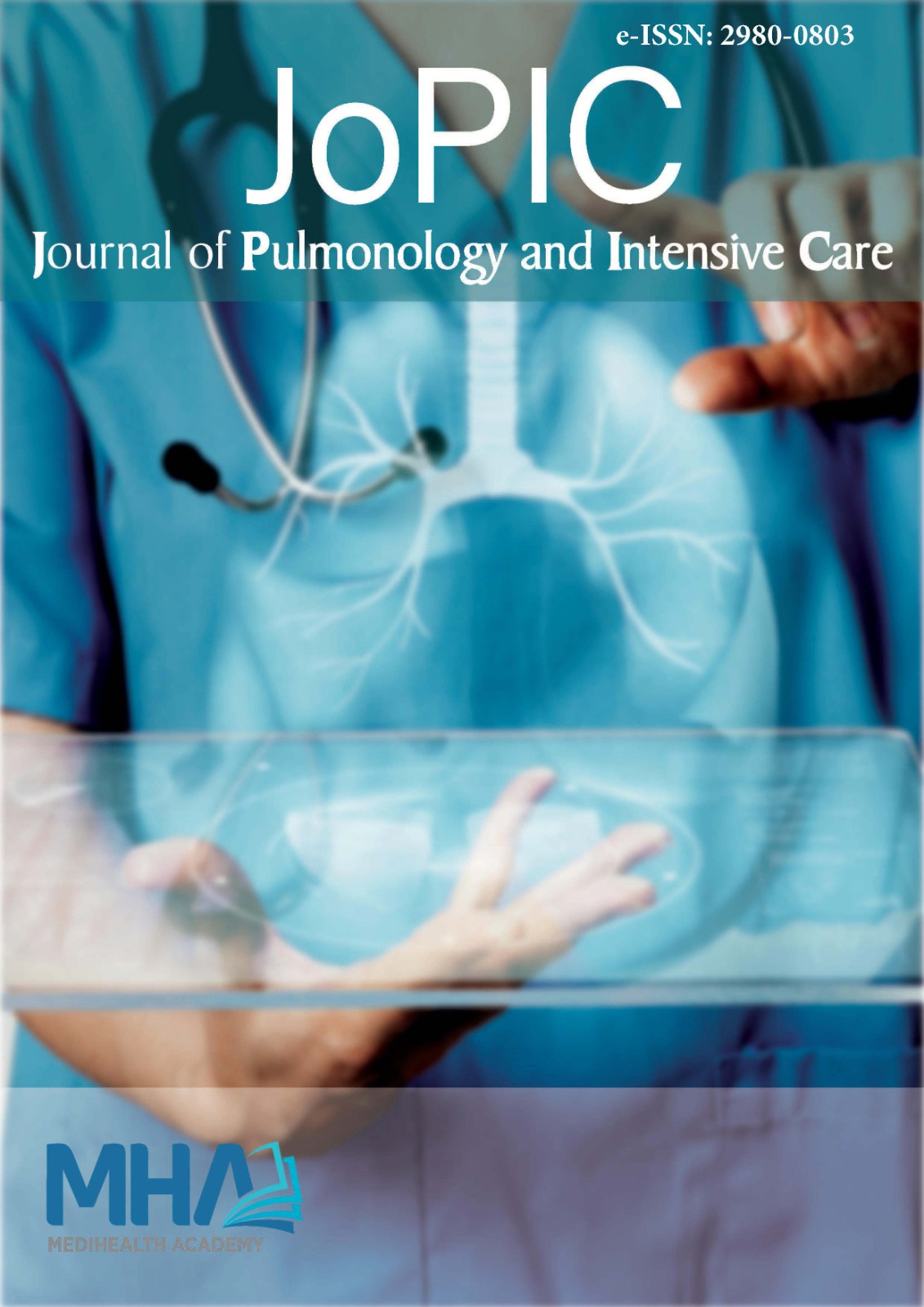1. Celli B, Fabbri L, Criner G, et al. Definition and nomenclature of chronic obstructive pulmonary disease: time for its revision. Am J Respir Crit Care Med. 2022;206(11):1317-1325. doi:10.1164/rccm.202204-0671PP
2. Global strategy for prevention, diagnosis and management of COPD: 2024 report. Available at: https://goldcopd.org/2024-gold-report/. Accessed October 24, 2024.
3. Anthonisen NR, Manfreda J, Warren CP, et al. Antibiotic therapy in exacerbations of chronic obstructive pulmonary disease. Ann Intern Med. 1987;106(2):196-204. doi:10.7326/0003-4819-106-2-196
4. Miyatani K, Saito H, Kono Y, et al. Combined analysis of the pre-and postoperative neutrophil-lymphocyte ratio predicts the outcomes of patients with gastric cancer. Surg Today. 2018;48(3):300-307. doi:10.1007/s00595-017-1587-6
5. Paliogiannis P, Scognamillo F, Bellomo M, et al. Neutrophil to lymphocyte ratio as a predictor of thyroid papillary carcinoma. Acta Med Mediterr. 2015;31:371-375.
6. Mc Millan DC. Systemic inflammation, nutritional status and survival in patients with cancer. Curr Opin Clin Nutr Metab Care. 2009;12(3):223-226. doi:10.1097/MCO.0b013e32832a7902
7. McMillan DC, Crozier JE, Canna K, et al. Evaluation of an inflammation-based prognostic score (GPS) in patients undergoing resection for colon and rectal cancer. Int J Colorectal Dis. 2007;22(8):881-886. doi:10.1007/s00384-006-0259-6
8. Ishizuka M, Nagata H, Takagi K, et al. Inflammation-based prognostic score is a novel predictor of postoperative outcome in patients with colorectal cancer. Ann Surg. 2007;246(6):1047-1051. doi:10.1097/SLA.0b013e 3181454171
9. Kobayashi T, Teruya M, Kishiki T, et al. Inflammation-based prognostic score, before neoadjuvant chemoradiotherapy, predicts postoperative outcome in patients with esophageal squamous cell carcinoma. Surgery. 2008;144(5):729-735. doi:10.1016/j.surg.2008.08.015
10. Crumley AB, McMillan DC, McKernan M, et al. Evaluation of an inflammation-based prognostic score in patients with inoperable gastro-oesophageal cancer. Br J Cancer. 2006;94(5):637-641. doi:10.1038/sj.bjc. 6602998
11. Glen P, Jamieson NB, McMillan DC, et al. Evaluation of an inflammation-based prognostic score in patients with inoperable pancreatic cancer. Pancreatology. 2006;6(5):450-453. doi:10.1159/000094562
12. Forrest LM, McMillan DC, McArdle CS, et al. Comparison of an inflammation-based prognostic score (GPS) with performance status (ECOG) in patients receiving platinum-based chemotherapy for inoperable non-small-cell lung cancer. Br J Cancer. 2004;90(9):1704-1706. doi:10. 1038/sj.bjc.6601789
13. Kuluöztürk M, Deveci F. The Glasgow prognostic score can be a predictor of mortality in acute exacerbation of chronic obstructive pulmonary disease. Expert Rev Respir Med. 2020;14(5):521-525. doi:10.1080/17476348.2020. 1735366
14. Ozlu T. Airway diseases. In. Ozlu T, Metintas M, Karadag M, Kaya A. Respiratory system diseases Basic reference book. Volume I, 1st Edition. Istanbul; Istanbul Medical Bookstore, 2010.
15. Albert RK, Connett J, Bailey WC, et al. Azithromycin for prevention of exacerbations of COPD. N Engl J Med. 2011;365(8):689-698. doi:10.1056/NEJMoa1104623
16. Global strategy for the diagnosis, management and prevention of COPD, global initiative for chronic obstructive lung disease (GOLD) 2018.
17. Kocabaş A, Atış S, Çöplü L, et al. Turkish thoracic society COPD working group. chronic obstructive pulmonary disease (COPD) prevention, diagnosis and treatment reports 2014. Turk Thorac J. 2014;15(2):1-72.
18. Wedzicha JA Ers Co-Chair, Miravitlles M, Hurst JR, et al. Management of COPD exacerbations: aEuropean respiratory society/American thoracic society guideline.Eur Respir J. 2017;49(3):1600791. doi:10.1183/13993003. 00791-2016
19. Gu¨nay E, Sarınç Ulas¸lı S, Akar O, et al. Neutrophil-to-lymphocyte ratio in chronic obstructive pulmonary disease: a retrospective study. Inflammation. 2014;37(2):374-380. doi:10.1007/s10753-013-9749-1
20. Vestbo J, Anderson W, Coxson HO, et al. ECLIPSE investigators. Evaluation of COPD longitudinally to identify predictive surrogate end-points (ECLIPSE). Eur Respir J. 2008;31(4):869-873. doi:10.1183/09031936. 00111707
21. Agusti A, Edwards LD, Rennard SI, et al. Persistent systemic inflammation is associated with poor clinical outcomes in COPD: a novel phenotype. PloS One. 2012;7(5):e37483. doi:10.1371/journal.pone.0037483
22. Bilir B, Altıntaş N, Aydın M, et al. The predictive role of neutrophil to lymphocyte ratio in chronic obstructive pulmonary disease. Eur J Gen Med. 2016;13(2):105-110. doi:10.15197/ejgm.1554
23. Taylan M, Demir M, Kaya H, et al. Alterations of the neutrophil-lymphocyte ratio during the period of stable and acute exacerbation of chronic obstructive pulmonary disease patients. Clin Respir J. 2017;11(3):311-317. doi:10.1111/crj.12336
24. Paliogiannis P, Fois AG, Sotgia S, et al. The neutrophil-to-lymphocyte ratio as a marker of chronic obstructive pulmonary disease and its exacerbations: a systematic review and meta-analysis. Eur J Clin Invest. 2018;48(8):e12984. doi:10.1111/eci.12984
25. Hurst JR, Vestbo J, Anzueto A, et al. Susceptibility to exacerbation in chronic obstructive pulmonary disease. N Engl J Med. 2010;363(12):1128-1138. doi:10.1056/NEJMoa0909883
26. Akın B, Tu¨lek B, Arslan U, et al. Quantitative detection of Streptococcus pneumoniae, Haemophilus influenzae and Moraxella catarrhalis on sputum in exacerbations of chronic obstructive pulmonary disease by real-time PCR. Eurasian J Pulmonol. 2011;13(1):32-40. doi:10.5505/solunum.2011. 88156
27. Kalemci S, Akin F, Sarihan A, et al. Relationship between hematological parameters and severity of chronic obstructive pulmonary disease. Pol Arch Intern Med. 2018;128(3):171-177. doi:10.20452/pamw.4198
28. Zinellu A, Zinellu E, Mangoni AA, et al. Clinical significance of the neutrophil-to-lymphocyte ratio and platelet-to-lymphocyte ratio in acute exacerbations of COPD: present and future. Eur Respir Rev. 2022;31(166): 220095. doi:10.1183/16000617.0095-2022
29. Alshabanat A, Otterstatter MC, Sin DD, et al. Impact of a COPD comprehensive case management program on hospital length of stay and readmission rates.Int J Chron Obstruct Pulmon Dis. 2017;12:961-971. doi: 10.2147/COPD.S124385
30. Roche N, Rabbat A, Zureik M, Huchon G. Chronic obstructive pulmonary disease exacerbations in emergency departments: predictors of outcome.Curr Opin Pulm Med. 2010;16(2):112-117. doi:10.1097/MCP. 0b013e328335f039
31. Milan S, Bondalapati P, Megally M, et al. Positive expiratory pressure therapy with and without oscillation and hospital length of stay for acute exacerbation of chronic obstructive pulmonary disease.Int J Chron Obstruct Pulmon Dis. 2019;14:2553-2561. doi:10.2147/COPD.S213546
32. FWS K, Chan KP, Ngai J, et al. Blood eosinophil count as a predictor of hospital length of stay in COPD exacerbations.Respirology. 2020;25(3):259-266. doi:10.1111/resp.13660
33. Liao QQ, Mo YJ, Zhu KW, et al. Platelet-to-lymphocyte ratio (PLR), neutrophil-to-lymphocyte ratio (NLR), monocyte-to-lymphocyte ratio (MLR), and eosinophil-to-lymphocyte ratio (ELR) as biomarkers in patients with acute exacerbation of chronic obstructive pulmonary disease (AECOPD). Int J Chron Obstruct Pulmon Dis. 2024;19:501-518. doi:10. 2147/COPD.S447519
34. Song A, Ni B, Tang M,et al. The association between an inflammation-based nutritional tool (Glasgow prognostic score) and length of hospital stay in patients with haematological cancer. Support Care Cancer. 2024;32(12):804. doi:10.1007/s00520-024-09021-0
35. Tan T, Song A, Tang M, Wang J, Feng Y, Xu R. The relationship between Glasgow prognostic score and hospital duration in patients with inflammatory bowel diseases. Asia Pac J Clin Nutr. 2024;33(3):362-369. doi:10.6133/apjcn.202409_33(3).0006

